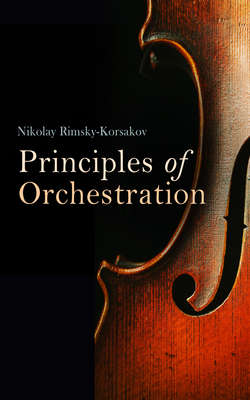Читать книгу Principles of Orchestration, with Musical Examples Drawn from His Own Works - Rimsky-Korsakov Nikolay - Страница 14
На сайте Литреса книга снята с продажи.
Table C. Brass group.
ОглавлениеThese instruments give all chromatic intervals.[A] [B]
Natural sounds are given in white notes. The upper lines indicate the scope of greatest expression.
The group of brass instruments, though uniform in resonance throughout its constituent parts, is not so well adapted to expressive playing (in the exact sense of the word) as the wood-wind group. Nevertheless, a scope of greatest expression may be distinguished in the middle registers. In company with the piccolo and double bassoon it is not given to the small trumpet (E♭-D) and tuba to play with any great amount of expression. The rapid and rhythmical repetition of a note by single tonguing is possible to all members of the brass, but double tonguing can only be done on instruments with a small mouth-piece, trumpets and cornets. These two instruments can execute rapid tremolando without difficulty. The remarks on breathing, in the section devoted to the wood-wind, apply with equal force to the brass.
The use of stopped notes and mutes alters the character of brass tone. Stopped notes can only be employed on trumpets, cornets and horns; the shape of trombones and tubas prevents the hand from being inserted into the bell. Though mutes are applied indiscriminately to all brass instruments in the orchestra, tubas rarely possess them. Stopped and muted notes are similar in quality. On the trumpet, muting a note produces a better tone than stopping it.
In the horn both methods are employed; single notes are stopped in short phrases, muted in longer ones. I do not propose to describe the difference between the two operations in detail, and will leave the reader to acquire the knowledge for himself, and to form an opinion as to its importance from his own personal observation. Sufficient to say that the tone is deadened by both methods, assuming a wild "crackling" character in forte passages, tender and dull in piano. Resonance is greatly reduced, the silvery tone of the instrument so lost and a timbre resembling that of the oboe and Eng. horn is approached. Stopped notes (con sordino) are marked + underneath the note, sometimes followed by , denoting the resumption of open sounds, senza sordini. Brass instruments, when muted, produce an effect of distance.
